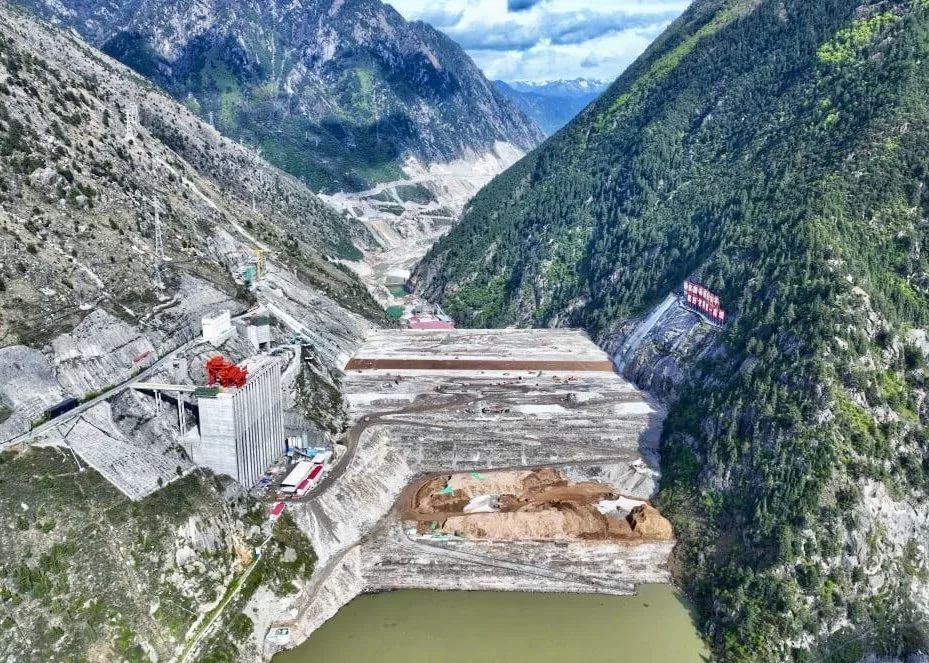China is nearing completion of the Shuangjiangkou hydropower project, set to become the world’s tallest dam. On May 1, 2025, the project reached a significant milestone by initiating water storage.
Project factsheet
-
Location: Aba Tibetan and Qiang Autonomous Prefecture, Sichuan Province, China
-
Height: 315 metres
-
Reservoir capacity: 110 million cubic metres
-
Installed capacity: 2,000 megawatts
-
Annual electricity generation: Approximately 7.7 billion kilowatt-hours
-
Construction cost: 36 billion yuan (US$4.9 billion)
-
Construction start date: 2013
-
Expected commissioning: First unit by end of 2025
The Shuangjiangkou Dam is being constructed on the Dadu River, a major tributary of the Yangtze River. Upon completion, it will surpass the Jinping-I Dam, also located in Sichuan, by 10 metres to become the tallest dam globally.
The primary objectives of the dam include power generation and flood control. The hydropower station will house four 500 MW Francis turbine-generators, collectively producing enough electricity to power over three million homes annually.
In addition to energy production, the dam is designed to mitigate flood risks in the region. Its substantial reservoir capacity will allow for effective management of water flow, thereby protecting downstream communities during periods of heavy rainfall.
READ ALSO: Spain backs Africa’s biggest desalination plant in Casablanca with €340 million
Shuangjiangkou hydropower project shows China’s skill, tech and green effort
The construction of the Shuangjiangkou Dam has presented significant engineering challenges due to its high-altitude location, over 2,400 metres above sea level, and complex geological conditions. To address these issues, advanced technologies such as robotics and 5G-enabled systems have been employed. Robotic rollers equipped with sensors collect real-time data to optimise construction performance, while drones monitor environmental risks around the site.
China leads the world in dam construction, having built over 22,000 dams taller than 15 metres since the 1950s, accounting for nearly half of the global total. The completion of the Shuangjiangkou hydropower project will further solidify China’s position as a global leader in hydropower development.
Environmental considerations have been integral to the project’s development. The renewable energy produced by Shuangjiangkou hydropower project is expected to offset approximately 2.96 million tonnes of coal consumption annually, reducing carbon dioxide emissions by about 7.18 million tonnes. This contribution aligns with China’s commitment to achieving carbon neutrality and combating climate change.

